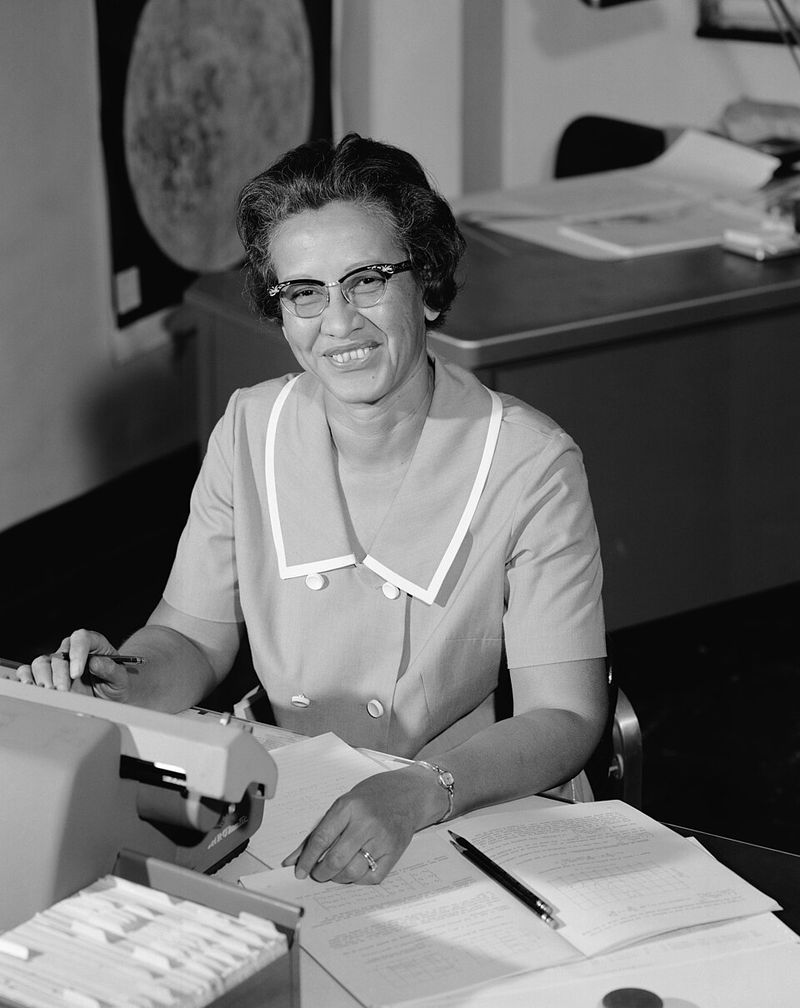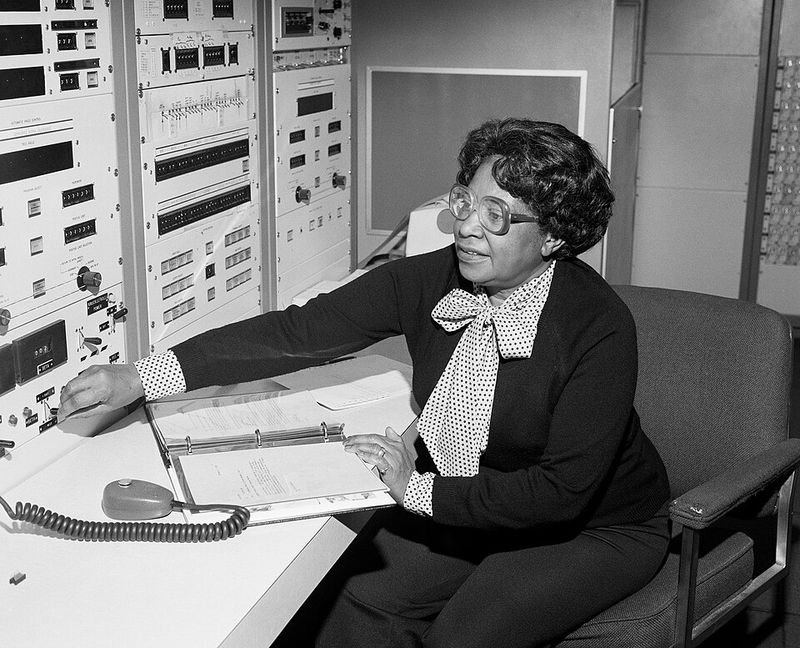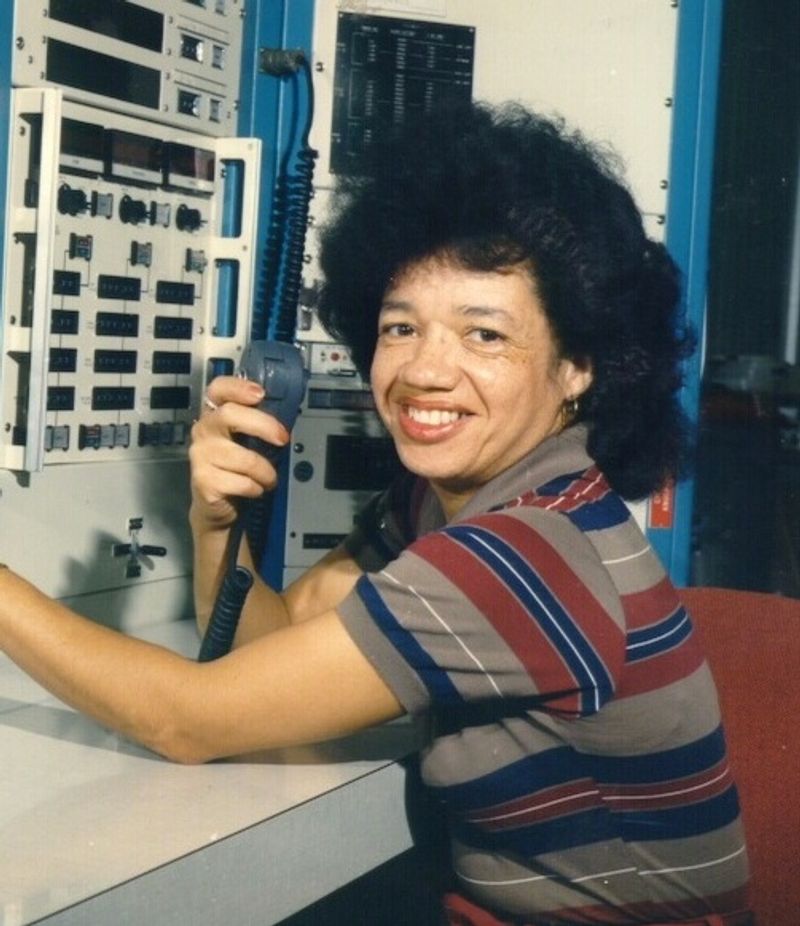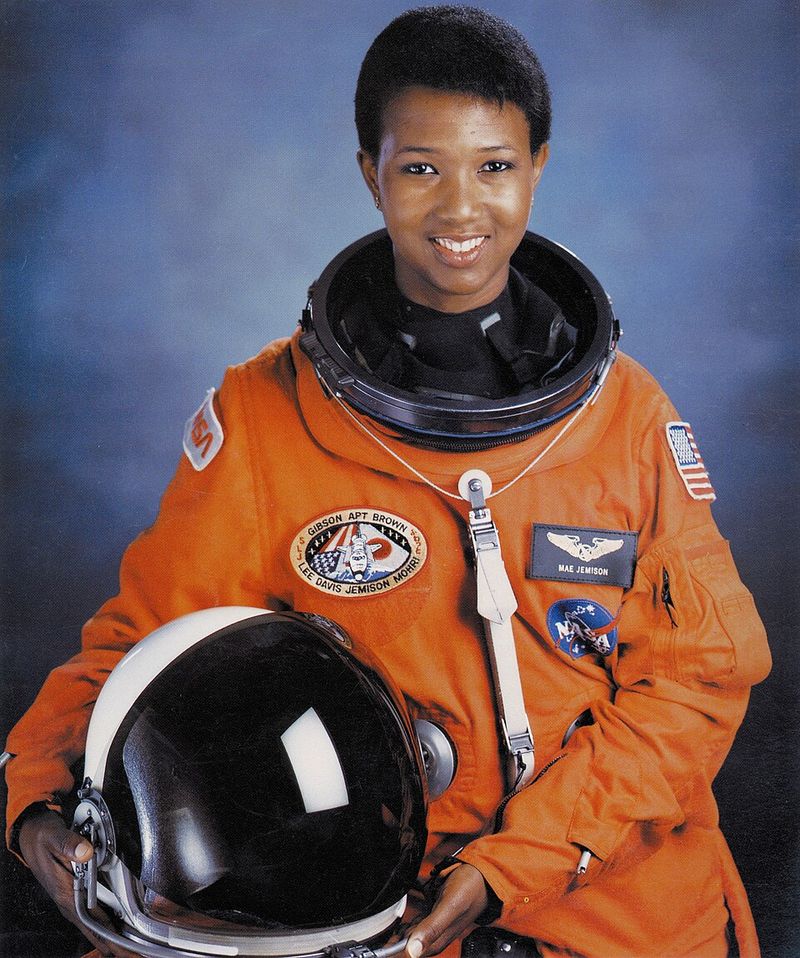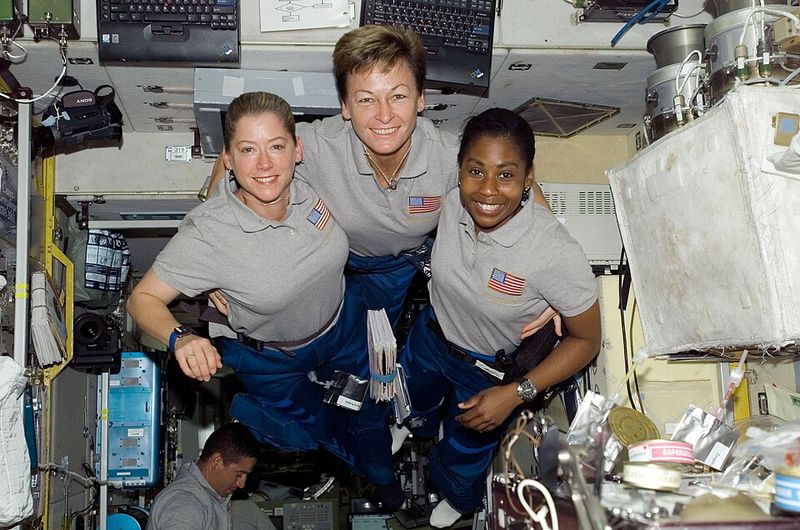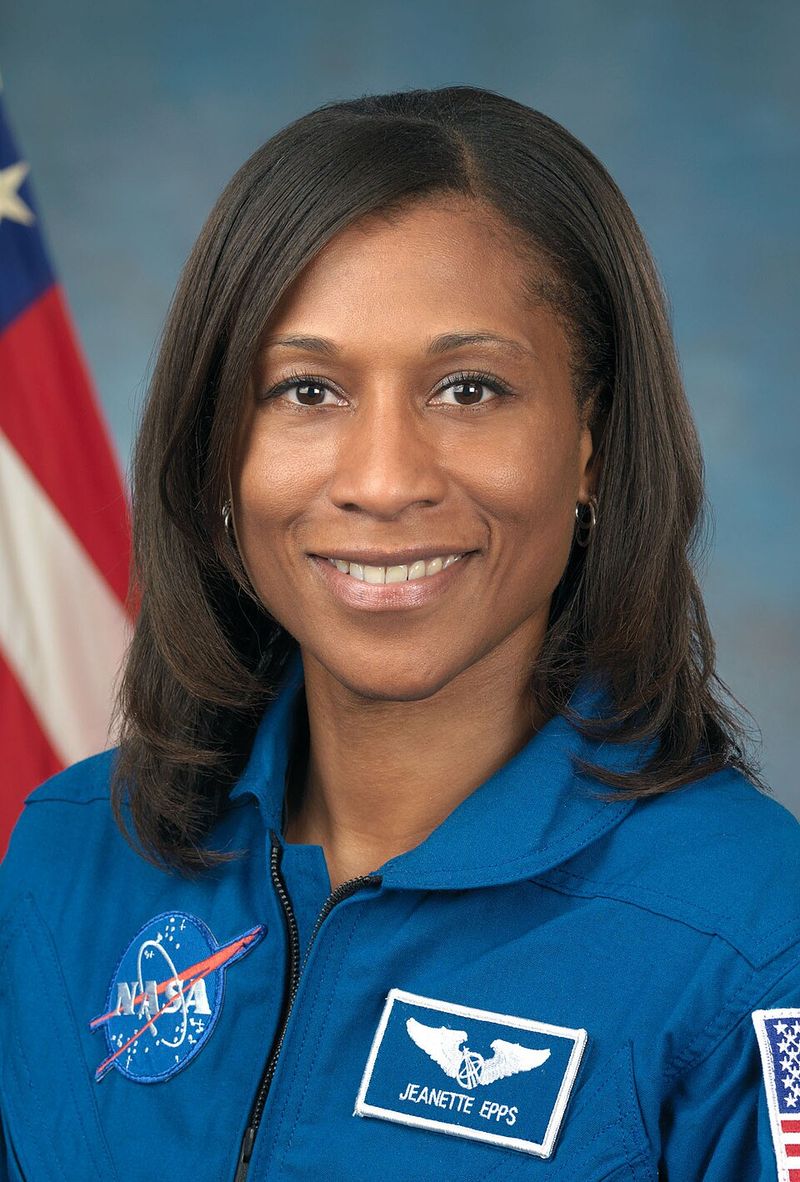For decades, America’s race to the stars relied on brilliant Black women whose names were rarely spoken beyond the walls of NASA. While astronauts became household heroes, these mathematicians, engineers, and scientists worked tirelessly behind the scenes, calculating trajectories, designing experiments, and breaking barriers that kept women and people of color from advancing. Their contributions weren’t just important; they were absolutely essential to putting Americans in orbit and bringing them home safely.
1. Katherine G. Johnson
Long before computers ran the numbers for space missions, Katherine Johnson did the math by hand. Born in 1918, she possessed an extraordinary gift for calculations that would literally send astronauts to the moon and back.
Working at NASA during an era of strict racial segregation, she faced barriers at every turn. Yet her precision with orbital mechanics and trajectory calculations proved indispensable. When John Glenn prepared for his historic orbital flight, he refused to launch until Katherine personally verified the computer’s numbers, saying he trusted her over any machine.
Her work spanned decades and included calculations for Apollo 11’s moon landing. She retired in 1986, leaving behind a legacy that inspired countless young women of color to pursue careers in science and mathematics.
2. Mary W. Jackson
Breaking through wasn’t just about talent for Mary Jackson; it required fighting an unfair system every single day. Starting as a human computer in the segregated West Area Computing unit, she dreamed of becoming an engineer at a time when Black women weren’t welcome in such roles.
To take the necessary classes, she had to petition the city of Hampton, Virginia, for permission to attend an all-white high school at night. She won that battle and became NASA’s first Black female engineer in 1958. For decades, she analyzed data from wind-tunnel experiments, helping improve aircraft and spacecraft designs.
Later in her career, she shifted focus to help other women and minorities climb the ladder she’d fought so hard to scale herself.
3. Dorothy Vaughan
Leadership came naturally to Dorothy Vaughan, even when the system tried to deny her the title. Born in 1910, she became the first Black woman supervisor at the National Advisory Committee for Aeronautics, which later became NASA.
She didn’t just manage people; she prepared them for the future. Recognizing that electronic computers would replace human calculators, Dorothy taught herself and her team FORTRAN programming language. This forward-thinking move ensured her group remained valuable as technology evolved.
Her story demonstrates that true leadership means lifting others while climbing. Dorothy worked at NASA until 1971, paving pathways for generations of female engineers and programmers who followed in her pioneering footsteps.
4. Christine M. Darden
Christine Darden refused to stay in a box labeled computer when she knew she could engineer solutions. Born in 1942, she started as a data analyst but quickly realized male engineers with similar backgrounds were getting promoted while she wasn’t.
Rather than accept this quietly, she asked her supervisor why. That bold question changed her career trajectory. Soon she was researching supersonic flight and sonic booms at NASA’s Langley Research Center, becoming an expert in her field.
Her persistence paid off spectacularly when she became the first African-American woman at Langley promoted to the Senior Executive Service, one of the highest levels in federal employment. Christine proved that speaking up for yourself matters.
5. Mae C. Jemison
When Mae Jemison blasted off aboard Space Shuttle Endeavour in 1992, she shattered a barrier that had stood since the space program began. She became the first African-American woman to travel into space, fulfilling a dream she’d held since childhood.
Before joining NASA, Mae had already lived multiple extraordinary lives. She worked as a physician, served as a Peace Corps volunteer in West Africa, and studied engineering. This blend of skills made her uniquely qualified for space missions requiring both technical expertise and medical knowledge.
Her eight-day mission conducted experiments in material science and life sciences. After leaving NASA, she founded a technology company and continues inspiring young people to pursue science careers.
6. Stephanie D. Wilson
Stephanie Wilson didn’t just go to space once for a quick visit; she went three times, proving that Mae Jemison’s achievement was no fluke. Born in 1966, Stephanie became the second African-American woman in space and accumulated more flight experience than many astronauts ever get.
Her three Space Shuttle missions between 2006 and 2010 included critical assembly and resupply flights to the International Space Station. Each mission required precision, teamwork, and nerves of steel as crews worked in the harsh environment of space.
Stephanie’s sustained participation demonstrated that Black women belonged not just as pioneers making history, but as regular, valued members of America’s astronaut corps contributing mission after mission.
7. Jeanette J. Epps
Patience and persistence define Jeanette Epps’s journey to space. Born in 1970, she faced disappointments that would have crushed most people’s dreams. Originally assigned to a mission in 2018, she was removed from the crew for reasons NASA never fully explained publicly.
Rather than give up, Jeanette kept training and waiting for her chance. It finally came when she launched to the International Space Station, where she logged an impressive 235 days in orbit. That’s nearly eight months living and working in microgravity, conducting experiments and maintaining the station.
Her extended stay made her one of the African-American women with the longest cumulative time in space, proving that setbacks don’t have to mean the end of your dreams.
8. Jessica Watkins
History keeps being made, and Jessica Watkins wrote a new chapter when she became the first Black woman assigned to a long-duration mission aboard the International Space Station. Her 2022 launch represented another breakthrough in representation for women of color in space exploration.
Before becoming an astronaut, Jessica worked as a geologist studying Mars and participating in rover operations. This background made her especially valuable for scientific research conducted aboard the station. She spent months running experiments, maintaining equipment, and even conducting spacewalks outside the station.
Jessica’s achievement shows that the pathway pioneers like Katherine Johnson and Mae Jemison created remains active and expanding. The journey toward full representation in space continues with each new mission and each barrier broken.
9. Sian Proctor
In 2021, Sian Proctor became the first African American woman to pilot a spacecraft when she flew aboard SpaceX’s Inspiration4 mission. This geology professor and commercial astronaut orbited Earth for three days, making history with every passing mile.
But her connection to space runs deeper—her father worked at a NASA tracking station during the Apollo missions. Proctor herself almost became a NASA astronaut in 2009, missing selection by just one spot.
Instead of giving up, she kept training and pursuing her passion. Her persistence paid off spectacularly, proving that sometimes the universe has different plans that turn out even better than expected.

